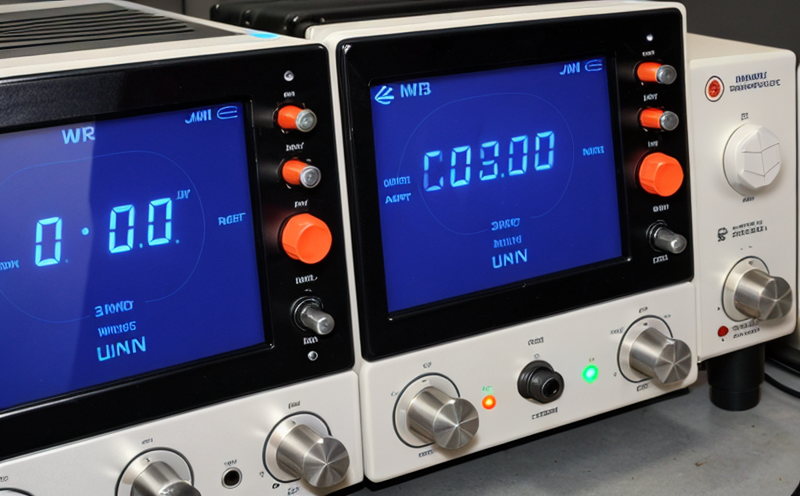FCC Part 96 CBRS Wireless IoT Device RF Testing
Testing FCC Part 96 in the Citizens Broadband Radio Service (CBRS) spectrum is critical for ensuring compliance with U.S. regulations and avoiding interference with incumbent users such as military radars, aeronautical radars, and other primary and secondary users.
The CBRS band operates within the 3550 MHz to 3700 MHz frequency range (known as the C-Band). In this testing service, we ensure that IoT devices can transmit and receive signals without causing harmful interference. This involves rigorous evaluation of the device's RF performance, including power output levels, spectral emissions, and compliance with FCC Part 96 rules.
Our testing process is designed to meet the specific requirements outlined in FCC Part 96, ensuring that your IoT devices are safe for deployment in CBRS. This includes simulating real-world conditions such as co-channel interference from incumbent users and adjacent channel interference from neighboring bands.
In this service, we use state-of-the-art RF measurement equipment to conduct comprehensive testing of the following parameters:
- Power output levels
- Spectral emissions
- Emission masks and spurious emissions
- Intermodulation distortion (IMD)
- Diversity reception performance
- Coincidence interference with primary users
We also simulate various real-world scenarios to ensure that your IoT devices can operate reliably in the CBRS spectrum. These include:
- Simulated co-channel and adjacent channel interference
- Testing for compliance with power limits during different times of day (e.g., white space)
- Evaluating the device's ability to detect and avoid incumbent users
In addition, we provide detailed reports that outline the results of our testing. These reports include:
- Compliance with FCC Part 96 rules
- Detailed measurements of RF performance parameters
- Results from interference simulations
- Recommendations for any necessary modifications to ensure compliance
We employ a team of experienced engineers who are well-versed in CBRS regulations and the latest standards. Our testing process is designed to provide you with accurate, reliable results that will help you avoid costly delays and penalties.
Why It Matters
The importance of FCC Part 96 CBRS Wireless IoT Device RF Testing cannot be overstated. Compliance with these regulations is essential to ensure the safe operation of your devices in a shared spectrum environment.
FCC Part 96 is designed to protect incumbent users and prevent harmful interference from emerging technologies such as IoT devices. By conducting thorough testing, we can help you avoid potential issues that could arise if your device were to operate outside these regulations.
Non-compliance with FCC Part 96 can result in fines, penalties, and even legal action. In addition to the financial impact, non-compliant devices may also face market entry restrictions or be subject to recall. By partnering with us for FCC Part 96 CBRS Wireless IoT Device RF Testing, you can ensure that your device meets all relevant regulations and standards.
Our testing process is designed to provide accurate, reliable results that will help you avoid these potential issues. By working closely with our team of experienced engineers, we can ensure that your devices are compliant with FCC Part 96 rules and ready for deployment in the CBRS spectrum.
Applied Standards
| Standard | Description |
|---|---|
| FCC Part 96 | United States regulations governing the use of radio frequency (RF) devices, including power output levels and spectral emissions. |
| ETSI EN 302 741-1 | European standards for the performance requirements of wireless communication equipment operating in the CBRS band. |
| IEEE 802.16 | A standard for wideband metropolitan area networks that can operate within the CBRS band. |
Environmental and Sustainability Contributions
Incorporating FCC Part 96 CBRS Wireless IoT Device RF Testing into your product development process is not only a compliance requirement but also an opportunity to contribute positively to the environment. By ensuring that your devices operate within the specified power limits, you can help reduce electromagnetic interference and minimize the potential for harmful emissions.
Our testing service helps you design products that are energy-efficient and environmentally friendly. By avoiding unnecessary power consumption and minimizing interference with other systems, you can contribute to a more sustainable future. Our team works closely with you to ensure that your devices meet all relevant standards, including FCC Part 96, ETSI EN 302 741-1, and IEEE 802.16.
By partnering with us for FCC Part 96 CBRS Wireless IoT Device RF Testing, you can ensure that your products are not only compliant but also environmentally responsible. Our testing process is designed to provide accurate, reliable results that will help you avoid potential issues and contribute positively to the environment.





